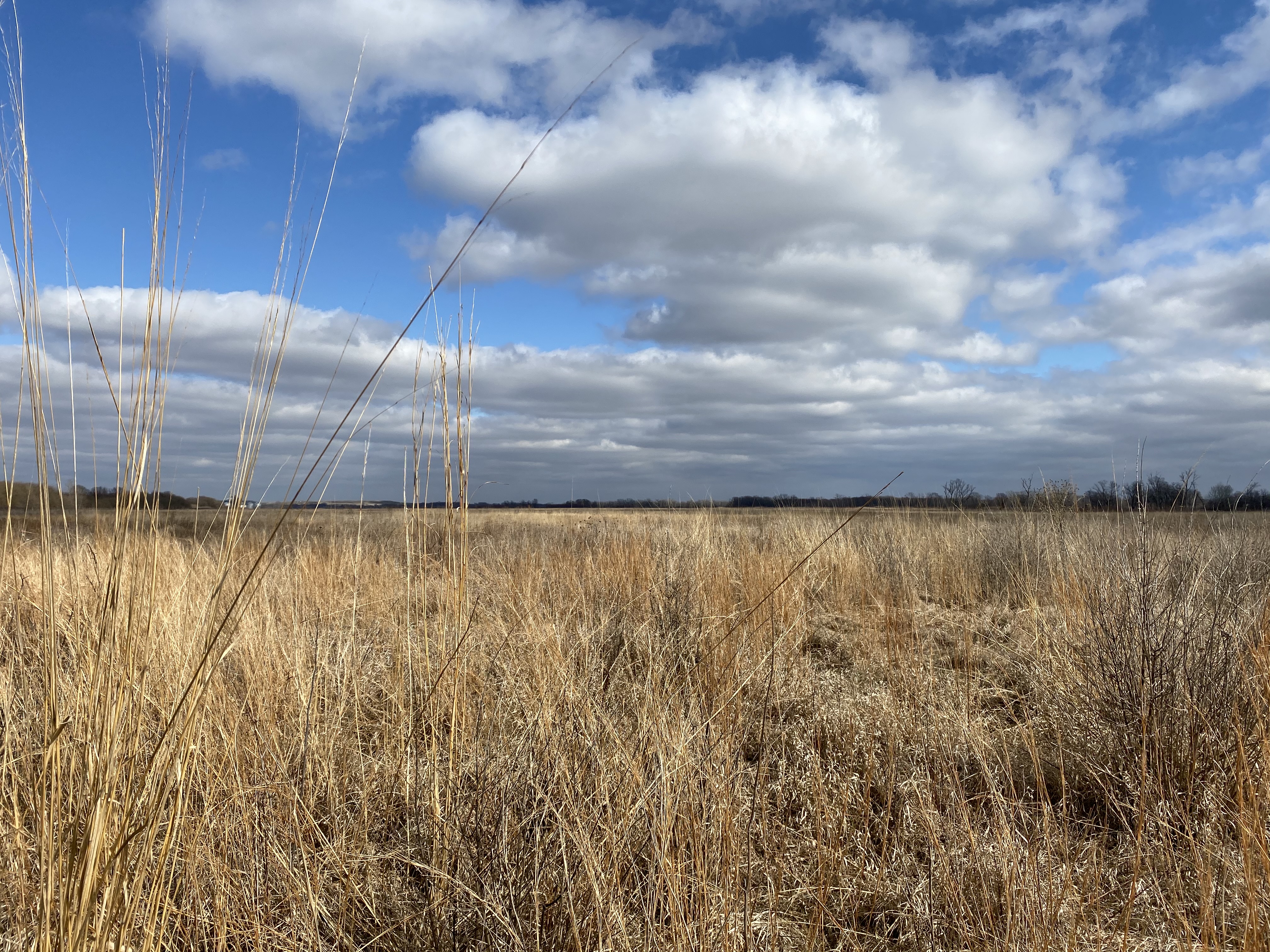Hoo, hooo-aw!
Midway through a hike along a deserted trail, a bird call stops my wife and me in our tracks. We scan the tree line and spot a grey bird perched in a leafless maple. It's a northern barred owl, we think, also known as a hoot owl. For a second, as the bird turns its unblinking black eyes on us, I mistake it for an otherworldly visitor; an alien of some sort.
Close encounters with nature are routine at Midewin National Tallgrass Prairie, an 18,500-acre state park located 50 miles southwest of Chicago, near Wilmington. Humans are scarce in this vast swath of land, but thousands of species of flora and fauna thrive here: weasels, toads, bullsnakes, gophers, coyotes, and even bison.
Currently, Midewin is one of the last remaining public green spaces open in Illinois. Amid the coronavirus outbreak, officials have been busy playing whack-a-mole with various parks and green spaces, closing them as soon as too dense a restless crowd pops up looking to cure their cabin fever.
On March 15, Illinois became the first state to fully close its state parks, historic sites, and fish and wildlife areas. Many counties, including Cook, followed suit. Then last week, after Chicagoans starved for fresh air packed the 606 and the Lakefront Trail, Mayor Lori Lightfoot shut down Chicago's lakefront parks.
.jpg)
Photo: Ryan Smith
At the national level, President Trump initially encouraged Americans to visit federal lands, even waiving admission to some national parks. But the National Park Service has since closed 100 sites to help prevent the spread of the virus, including iconic destinations like Yellowstone and Glacier National Parks, the Golden Gate Bridge, and the Statue of Liberty.
Midewin has survived these closures largely because it exists in a gray area. It’s neither a park nor a preserve, but one of 20 national grasslands managed by the U.S. Forest Service, an agency that's yet to give in to shelter-in-place. Though the Forest Service has shuttered one of Midewin’s several public restrooms, its 33 miles of trails remain open.
And why not? At 45 square miles, Midewin is so massive — roughly the size of 63 Grant Parks — that you could wander for hours without seeing another soul. On my four-mile hike on Sunday, I observed more birds of prey than fellow humans, including a red-tailed hawk and a pair of Cooper's hawks. The prairie offers more social distance than you’ll find anywhere else around Chicago.
Also grass. Lots of grass.
The majority of Midewin park is a sea of big bluestem and prairie cordgrass, much of it topping eight feet in height. It is the last great patch of prairie in our corn- and soybean-choked Prairie State. Amond the 9,000 acres of land currently open to the public, you'll find reminders of precolonial Illinois, including a herd of 85 bison grazing in a large fenced-in section.

Photo: Richard Short/USDA
“Those fences are for your protection as much as theirs,” a Midewin docent told me during a prior visit. “Those big fellas can leave quite a mark on you if you’re not careful.”
Midewin also boasts plenty of marshland, alive with the croaks and chirps of various amphibians. The ones I heard most distinctly on Sunday, I’m told, are chorus frogs.
“They sound a lot like a chorus of crickets, but with spikes of sounds in the mix that are similar to the sound of a frog rasp,” says Veronica Hinke, a spokesperson with the Forest Service. “Frog life at Midewin is closely tied to the restoration process. Acre by acre, each restored wetland provides a more natural habitat for frogs.”
About that restoration: When Midewin was established 25 years ago through the Illinois Land Conservation Act, much of it was wasteland. For 50 years prior, it had housed the Joliet Army Ammunition Plant, one of 77 munitions factories built during World War II. At its wartime peak, the facility employed 18,000 workers and produced more than 926 million bombs, shells, mines, and other explosives.
When the Army closed the plant in the early ’90s, Midewin's water and soil were severely contaminated. The Grant Creek, which flows southwest from Midewin into the Des Plaines River, once ran red due to chemicals emitted by TNT production.

Photo: Veronica Hinke

Photo: Ryan Smith
Today that’s changing, thanks to years of work by the Army Corps of Engineers, the Forest Service, and various volunteers who've worked to remediate the soil and water and plant new greenery. These days, Midewin is home to more than 300 species of native plants with evocative names like Prairie Indian plantain, rattlesnake master, and my personal favorite, Great Plains lady's tresses.
Though it's becoming a lovelier place, Midewin is still a tallgrass prairie in name alone. Only three percent of the designated land qualifies as such. Much of the rest is choked with weeds or other invasive species. Some has been divvied up between farmers who grow corn or beans; other parts are opened to seasonal hunters. (Some hikers opt to play it safe in orange vests.)
Midewin's transformation into Midwestern Eden has only just begun. Nestled in its billowing fields are empty streets, crumbling bunkers, old warehouses, and abandoned office buildings. The place is akin to Chernobyl’s exclusion zone, where wild animals and plants have begun thriving amid urban ruin. It serves as both a reminder of a world without humans, and of nature's absolute resiliency.

Photo: Ryan Smith




